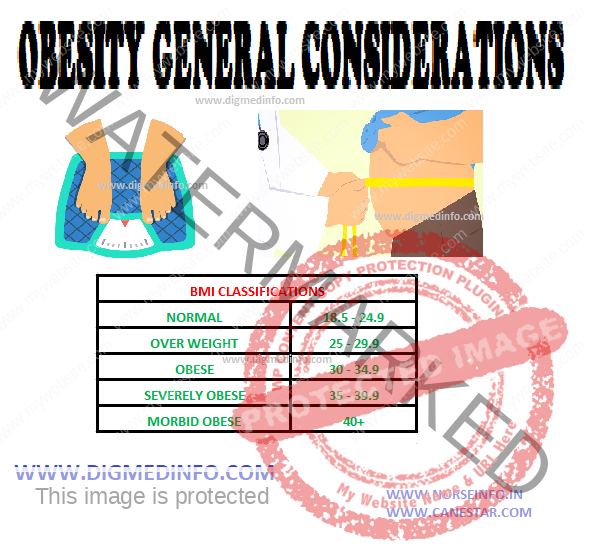OBESITY – GENERAL FEATURES – BMI
GENERAL FEATURES
Increase in body weight of 10-20% above the normal, caused by excess accumulation of fat is termed obesity. Healthy young men and women have a total body fat content below 20 and 25% respectively. When excess calories are supplied in any form, they are stored as fat.
In addition to general appearance and weight, measurement of skin fold thickness over the biceps, triceps, subscapular and suprailiac regions is helpful in the assessment of obesity. The skin fold thickness over the triceps for normal Indian subjects is below 20 mm. The proportion of body fat can be accessed from the skin fold thickness using nomograms.
Obesity has become the sixth common cause for disease burden worldwide. Adipose tissue in the body, in addition to its role as a source of stored energy, is emerging as an endocrine organ producing hormone and cytokines. In general the ideal weight of an individual should be (height in cm minus 100) kg .For example an adult male 175 cm tall should have a weight of 75 kg ± 5%.
Body Mass Index (BMI)
Body weight is only a crude indicator of obesity. A more reliable parameter is the BMI.
BMI = (Weight in kg)/height in m2)
Small community-based surveys done in several parts of the country give figures ranging from 17-38% BMI above 28 is associated with higher incidence of strokes, ischemic heart disease and diabetes mellitus. The distribution of fat deposition in the body is also important. For this purpose the circumference at the waist and the hip are taken as reference measurements.
Waist is measured after an overnight fast at the midpoint between the lower costal margin and iliac crest. Hip is the widest part over the gluteal region. Waist hip ratio above 1.0 in men and above 0.9 in women is an independent risk factor for higher incidence of insulin resistance, hypertension, rise in LDL, lower levels of HDL, hyperuricemia, cardiovascular disease, type 2 diabetes and stroke. Ideal waist to hip ratio is below 0.85 in men and 0.75 in women. The waist circumference above 102 cm (403) is an independent risk factor.
Abdominal obesity with accumulation of fat in the abdominal viscera is more associated with metabolic complications. The waist/hip ratio shows a graded and highly significant direct relationship with the risk for myocardial infarction.


